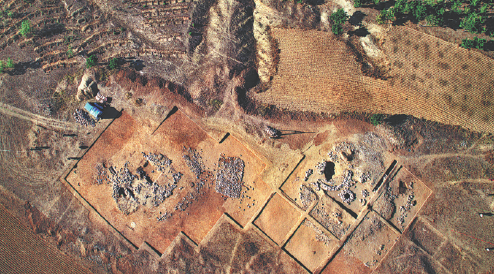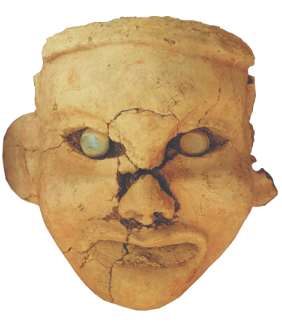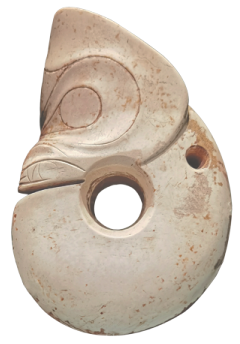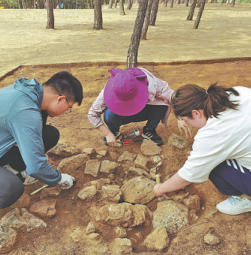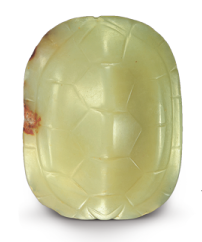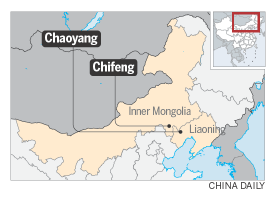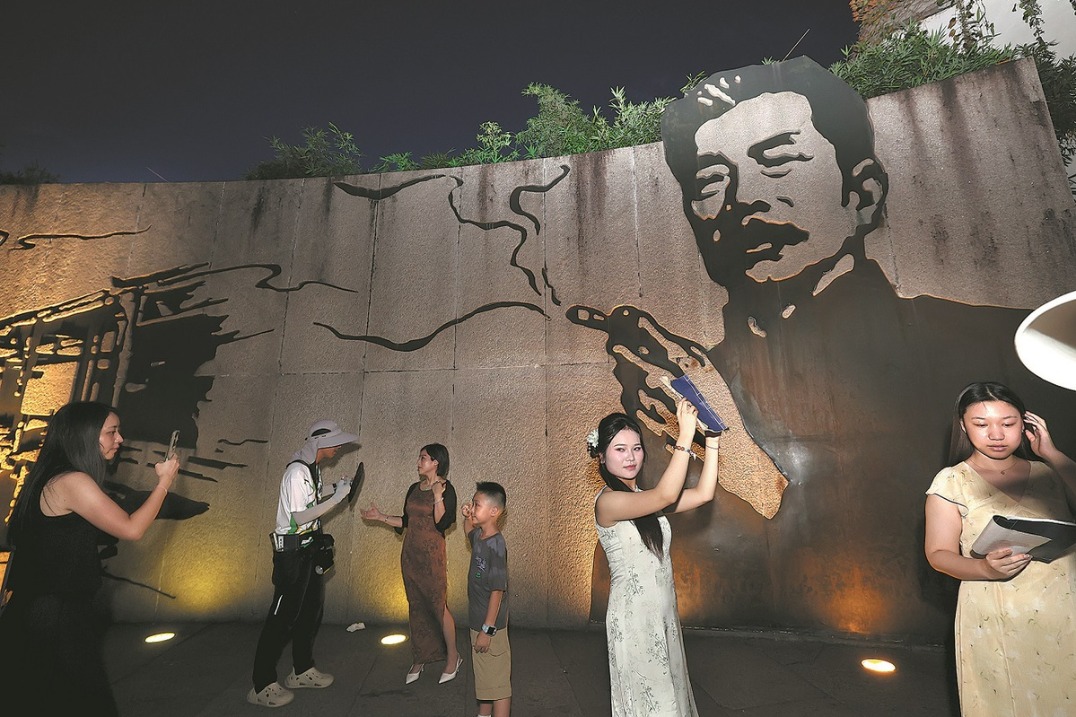Jade carvings echo through history
Discoveries at ancient site suggest a common bond linking various areas, report Fang Aiqing and Wang Kaihao.

Editor's note: A national comprehensive research program, launched in 2002, to trace the origins of Chinese civilization, has led to the excavations and studies of key sites that are about 3,500 to 5,500 years old. It has revealed a host of secrets about ancient China, including how early civilizations were formed and how they merged to create unity in diversity. China Daily speaks to experts working at these sites to decode their recent discoveries.
A mystic aura, lost temples and obscure belief systems. Many unknowns remain sleeping underground in this archaeological site in Northeast China, but scholars' efforts in past decades may provide the key to decode a puzzle from the earliest days of Chinese civilization.
In 1983, the groundbreaking discovery of a life-size head sculpture of a goddess at the Niuheliang archaeological site, which dates back 5,000 to 5,500 years, in Chaoyang city, Liaoning province, stunned people both at home and abroad.
Despite some missing parts, the sculpture, found in the ruins of a temple, is beguiling: She has a straight fringe and sideburns, high cheekbones, a wide mouth and round ears. The corners of her eyes are raised upward, and her sparkling eyes-her most impressive feature-are made from round stones as lucent as jade. The face had originally been painted red, though it has faded over time.
It presents the image of a fit, trim, gentle, though strong-minded, figure and the late archaeologist Su Bingqi (1909-97), an iconic figure in the field, described her as nothing less than "the foremother of the Chinese nation".
The discovery at the Niuheliang site shook a long-standing, widely held idea that Chinese civilization developed in the Central China Plains, along the middle and lower reaches of the Yellow River.
Starting with Niuheliang, later archaeological findings across the country seemed to gradually support Su's argument that Chinese civilization was inclusive and cohesive when it was formed, like numerous tributaries merging into one great river.
"Something worth noting about Niuheliang was its high level of social stratification and the hierarchal system embodied in both the architectural layout of ritual sites and the use of jade," says Guo Dashun, the honorary director of Liaoning Provincial Institute of Cultural Relics and Archaeology.
"In later generations, both found their inheritance in the core Confucian concept of li (ritual), which lasted throughout ancient Chinese history."
The sacrificial altar and rubble mound tombs are located in the south of the site, and the goddess temple is at its northern end. The temple is rectangular, and the altar is round and three-tiered. The whole layout is symmetrical with a central axis.
In the graveyard, major tombs were located at the center of the northern area, with smaller ones distributed to the south, suggesting the concentration of power, according to Guo, who led excavations in Niuheliang in the 1980s.
Nonetheless, such structures highlighting rituals were common later in Chinese history. Guo notes that similar practices were also seen in the city planning of ancient capitals like Chang'an of the Tang Dynasty (618-907)-now Xi'an of Shaanxi province-and Beijing's Temple of Heaven and Imperial Ancestral Temple, both built during the Ming Dynasty (1368-1644).
"It indicates the continuity of culture," Guo says. "The altar, the temple and the tombs altogether formed a comprehensive belief system of the heaven, the earth and our ancestors." Niuheliang, apparently, was a center of belief.
High-level tombs were buried with only jade items-no painted pottery-that were specifically designed for pursuing a spiritual life. In the eyes of archaeologists, the quality and quantity of these accessories revealed the high social status of the owners.
With diversified shapes, what fascinates modern people most about the jadeware is those items in the shape of dragons, the representative totem of traditional Chinese culture, conveying a sign of power and auspice. Its chubby shape was believed to be based on the figures of the swine or the bear.
The Niuheliang site is pivotal for studies of the Hongshan Culture, a key Neolithic culture in China that spread to parts of today's Inner Mongolia autonomous region, as well as Liaoning and Hebei provinces.
A new round of excavations was launched in 2020 and, last year, archaeologists discovered a symmetrical stone platform on the mountain, well-equipped drainage facilities and more relics used in ritual activities.
The man-made stone platform stretches southward and encloses the site of the goddess temple. Ramps, symmetrical, water-retaining, curved stone walls and drainage ditches were also discovered opposite the temple, all of which are the earliest relics of their kind ever unearthed in China.
As a result, the focus of this year's work is to confirm whether or not the goddess temple was part of a larger architectural complex and to further explore the ritual system, says Jia Xiaobing, a researcher with the Institute of Archaeology at the Chinese Academy of Social Sciences, and the person in charge of the ongoing excavation.
"It might be a breakthrough to understand the social nature of the Hongshan Culture," he says.
So far, archaeologists have discovered nine stone platforms covering an area of over 60,000 square meters. As Jia speculated, there might have been constructions for performing different functions on these well-designed platforms. On the highest point, there might have even been a "palace", the splendor of which would surpass that of the goddess temple.
"The overall design of such a large-scale construction project has shown the ability to mobilize and organize in Hongshan society," Jia says.
Jia is now leading a 15-year archaeological program, a part of which includes the Niuheliang site. In the near future, they will work to figure out the structure, connection and functions of the stone platforms, further excavate the goddess temple, and finally, extend their research work to related settlements and the exploration of areas nearby.
Jia says the aim is to explore further the composition of the Niuheliang people, their living conditions and social organizations via multidisciplinary cooperation.
Echoing Guo's viewpoint, Jia also attributes the root of traditional Chinese ceremonial system to Niuheliang. For example, when holding sacrifices for different gods or ancestors, the rituals and ceremonial artifacts used would vary to show rigid division among social classes.
"We see the people's attempts to attach greater importance to rituals in social development," Jia says. "That's what the word 'civilized' means."
Apart from material progress, civilization also includes spiritual and institutional aspects, and we should also pay attention to the significance of rituals and regimes on social development, he adds.
According to the late archaeologist Su, during the Neolithic period, civilizations in various regions of China developed locally before they got in touch and gradually integrated with one another to form the Chinese nation. It was thus called "unity with diversity".
When jade artifacts that are highly similar to those of Niuheliang were found at faraway sites, like Lingjiatan in Anhui province, which is about 1,400 kilometers away in East China, a network of prehistoric communication has gradually emerged into archaeologists' view.
"After 3500 BC, as various societies in major cultural regions become more complex, new upper classes formed," Li Xinwei, a researcher with the Institute of Archaeology, CASS, comments. "That also brought communication spanning long distances. Such communication involved an exchange of knowledge that could only be the preserve of the upper classes, like burial customs and ceremonial rituals."
Wu Yong and Zhang Tongtong contributed to this story.
